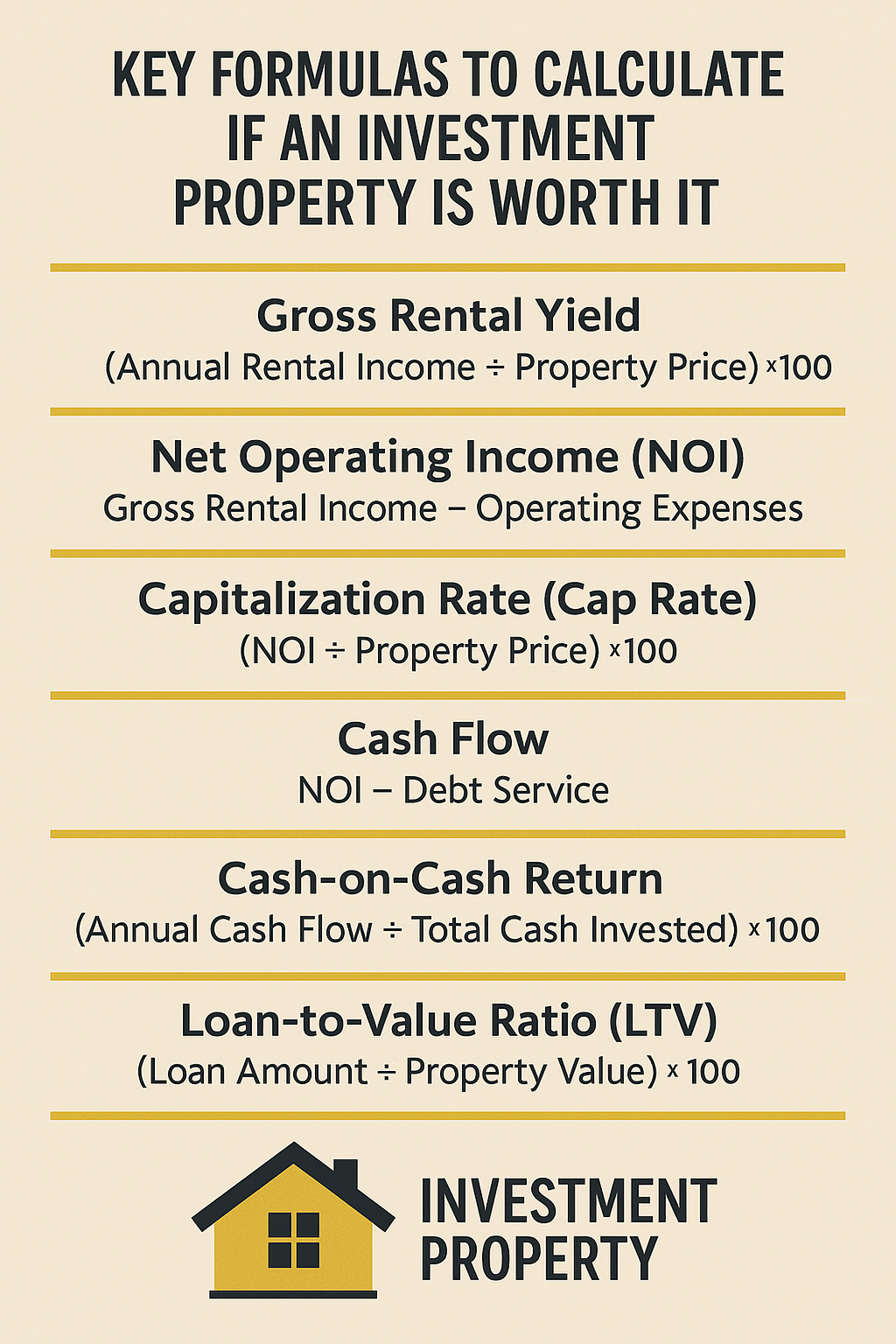
Investing in real estate can be a game-changer for building wealth—but only if the numbers make sense. Before diving into any property purchase, it’s crucial to run the math and make sure the investment aligns with your financial goals. Here’s a breakdown of the key formulas every smart investor should use to evaluate whether a property is truly worth it.
1. Gross Rental Yield
Formula:
(Annual Rental Income ÷ Property Price) × 100
Why It Matters:Gross rental yield tells you how much rental income you’ll earn compared to the purchase price. It’s a great quick-glance metric to compare multiple properties.
Example:If a property costs $500,000 and brings in $30,000/year in rent:
($30,000 ÷ $500,000) × 100 = 6% Gross Yield
Look for: 5–8% as a solid range in most markets.
2. Net Operating Income (NOI)
Formula:
Gross Rental Income – Operating Expenses = NOI
Why It Matters:This tells you how much profit the property is generating before mortgage payments and taxes. It’s crucial for calculating your cap rate and return potential.
Example:Gross income: $30,000Operating expenses (maintenance, insurance, property taxes, etc.): $10,000
NOI = $30,000 – $10,000 = $20,000
3. Capitalization Rate (Cap Rate)
Formula:
(NOI ÷ Property Price) × 100
Why It Matters:Cap rate gives you a clearer picture of return on investment without financing involved. It’s one of the most commonly used investor tools.
Example:NOI = $20,000, Purchase Price = $500,000
($20,000 ÷ $500,000) × 100 = 4% Cap Rate
Good cap rates vary by market—urban centers tend to be lower, while rural or emerging areas may offer higher rates.
4. Cash Flow
Formula:
NOI – Debt Service (Mortgage Payments) = Cash Flow
Why It Matters:Positive cash flow means the property is generating extra income after all expenses, including your mortgage. This is key for long-term financial health.
Example:NOI = $20,000Annual mortgage payments = $18,000
Cash Flow = $20,000 – $18,000 = $2,000/year
Positive cash flow = stability. Negative cash flow = risky investment (unless there’s a strategic reason).
5. Cash-on-Cash Return
Formula:
(Annual Cash Flow ÷ Total Cash Invested) × 100
Why It Matters:This shows how hard your actual invested dollars are working for you. It’s essential if you’re using financing.
Example:Annual cash flow = $2,000Cash invested = $100,000 (down payment, closing costs, etc.)
($2,000 ÷ $100,000) × 100 = 2% Cash-on-Cash Return
Look for at least 6–10% to ensure your money is working efficiently.
6. Loan-to-Value Ratio (LTV)
Formula:
(Loan Amount ÷ Property Value) × 100
Why It Matters:Lenders use LTV to assess risk. As an investor, it helps you understand your leverage. Lower LTV means lower risk and often better interest rates.
Example:Loan amount = $400,000Property value = $500,000
($400,000 ÷ $500,000) × 100 = 80% LTV
Final Thoughts
Crunching the numbers is a non-negotiable step when investing in real estate. These formulas can help you weed out underperforming properties and zero in on investments that actually build your wealth.
Not sure how to apply these to a local property? I can help you run the numbers based on current listings in your area—or help you assess a property you’re already considering. Get in touch, and let’s take the guesswork out of your next investment.